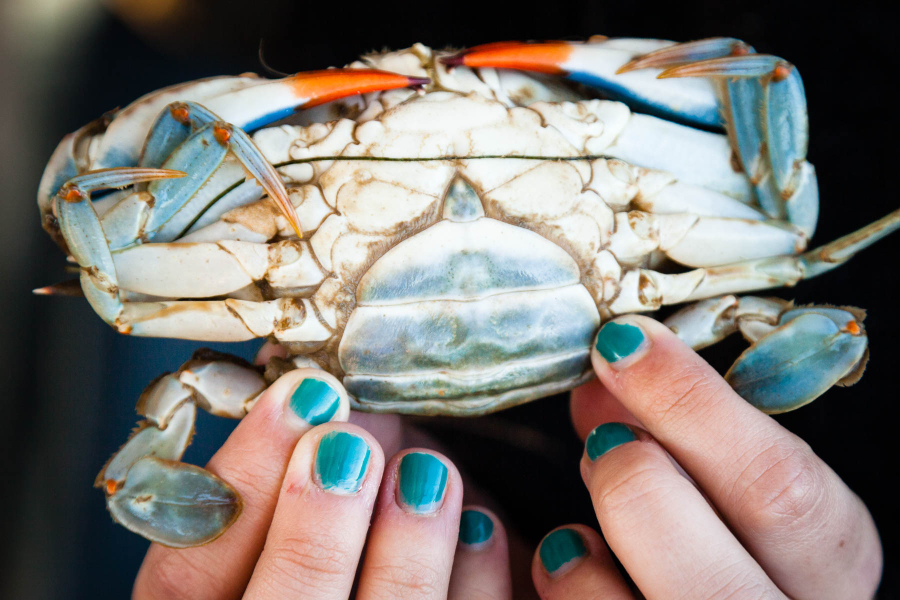Scientists encourage resource managers to focus on female, juvenile blue crabs
Overall population climbed this year, but analysis suggests vigilance is needed

Scientists analyzing blue crab numbers in the Chesapeake Bay recommend that resource managers focus on protecting enough mature females and juveniles to maintain a healthy spawning stock.
While overall numbers are up a bit, the 2023 Blue Crab Advisory Report—just released by the Chesapeake Bay Stock Assessment Committee, a working group of the Chesapeake Bay Program’s Sustainable Fisheries Goal Implementation Team—notes that some population segments are faring better than others.
The blue crab population was 227 million in 2022, according to the 2022 Winter Dredge Survey. The 2022 population level was the lowest since the Winter Dredge Survey, which is conducted by Maryland and Virginia, began in 1990. In 2023, the population showed signs of improvement, as it climbed to 323 million.
While the analysis in the Blue Crab Advisory Report shows that there were 152 million adult female crabs in the Bay during the 2023 Winter Dredge Survey—up from 97 million last year—that number is still below the target level of 196 million. The juvenile population was up slightly, from 101 million in 2022 to 116 million in 2023, but was still one of the lowest in Winter Dredge Survey history.
The annual Blue Crab Advisory Report includes analysis of data from the Winter Dredge Survey, the previous year’s harvest data, and discussion of data gaps and research needs.
Scientists exploring environmental and ecological reasons behind low juvenile numbers
Because adult and especially female crab numbers have remained within guidelines, scientists are curious as to why juvenile numbers haven’t been more robust. The Chesapeake Bay Stock Assessment Committee held a science workshop in fall 2022 to bring scientists together to begin to explore challenges facing the blue crab population.
They agree more research is needed in some areas to better understand population dynamics. For example, are warming waters shifting when and where blue crabs spawn? Is the habitat blue crabs need during different parts of their life cycle being affected by climate change or other challenges? Are new predators in the Bay targeting blue crabs?
In progress: A new benchmark stock assessment
While the annual Winter Dredge Survey provides a solid snapshot of the blue crab population, from time to time, scientists need a deeper dive into blue crab numbers. This deeper dive—and reexamining the numbers that guide blue crab management—is called a benchmark stock assessment.
The most recent stock assessment done for the Chesapeake Bay blue crab population was in 2011. Scientists are eager for a new stock assessment as it will also let them reevaluate the “thresholds” (population levels at which action is needed) and “targets” (desired levels) around which resource managers should develop regulations for commercial and recreational harvest. A new stock assessment can also incorporate new data and alternative models used to assess the population that have been developed since 2011.
Plans are under way for scientists to develop a new stock assessment. The process started at the fall 2022 blue crab science workshop. The “terms of reference”—which guide what goes into the stock assessment—were approved in March 2023. Maryland and Virginia have secured funding to support development of the project. The Chesapeake Bay Stock Assessment Committee plans to hold a workshop to review data sources for the assessment in fall 2023. The assessment is expected to be completed by late 2025.

Comments
There are no comments.
Thank you!
Your comment has been received. Before it can be published, the comment will be reviewed by our team to ensure it adheres with our rules of engagement.
Back to recent stories